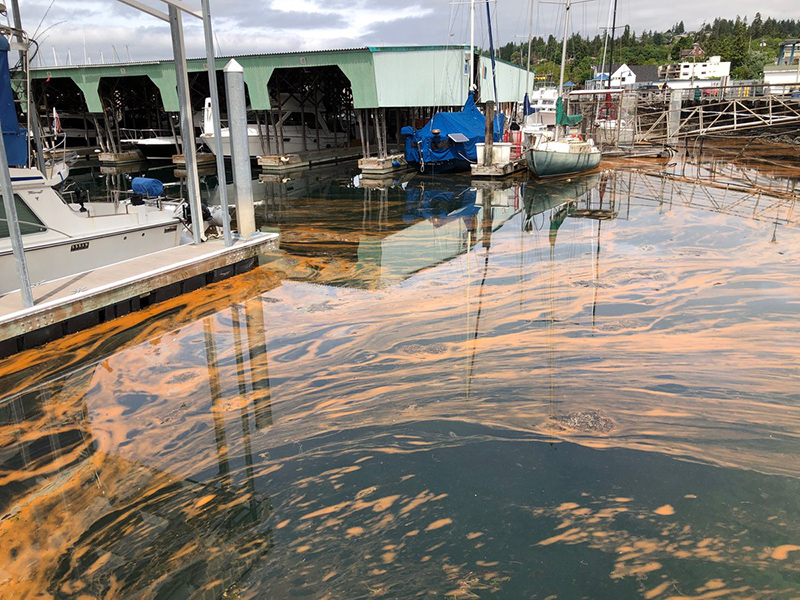Puget Sound has a Nitrogen Problem — It’s Time to Upgrade our Sewage Plants
Sewage plants release 26 million pounds of nitrogen in Puget Sound each year, according to the Department of Ecology. This is a serious problem for salmon, orcas, and the Puget Sound food web.

If you’re a gardener, you know that nitrogen is a key component in manure, infusing our vegetable gardens with explosive harvest potential. Likewise, in water, concentrated nitrogen fuels explosive growth (blooms) of phytoplankton (algae) — particularly from spring to early fall when there is more sunshine and the temperatures are warmer. As algae blooms use up the nutrients in the surface water, their growth slows and they eventually die. Their cells sink to the ocean floor, where they are decomposed by bacteria, which consume oxygen in the water (and release CO2). Large algae bloom die-off’s can create oxygen-depleted dead zones where aquatic life cannot survive. Even when they don’t create dead zones, the CO2 released by the bacteria during decomposition mixes with H20, increasing acidity, which impacts shellfish. No matter how you look at it, these blooms are bad for aquatic ecosystems, and the 26 million pounds of nitrogen introduced into the Puget Sound from wastewater treatment plants creates a devastating problem for the food web, all the way up to salmon and orcas.
Our wastewater treatment plants fall short. The article points out that Washington state treatment plants are behind the times. Requirements for upgrades were last made in the 1980’s, where they adopted technology developed in the early 20th century. Most treatment plants in Washington today simply do not remove nitrogen.
The article posted on Crosscut.com presents more details on the current debate on how we can meet Clean Water Act standards for dissolved oxygen for the Puget Sound, but where there is no debate is that nitrogen from human activity is to blame. We encourage you to read the article to learn more about the timeline, costs and interim measures associated with upgrading our wastewater treatment plants throughout the Puget Sound.
